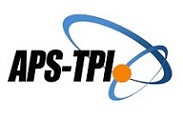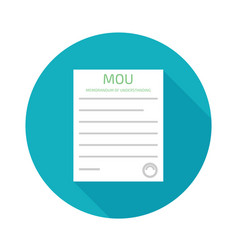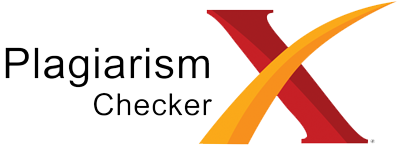Pengembangan Virtual Laboratory Pada Praktikum Pemisahan Kimia Terintegrasi Telefon Pintar
Abstract
Abstrak: Inovasi metode pembelajaran di dalam laboratorium telah mengalami perkembangan sangat pesat. Salah satu inovasi tersebut melalui penggunaan kelas virtual laboratorium dalam kelas IPA, seperti halnya pada kelas pemisahan kimia. Tujuan dari penelitian ini adalah (1) menciptakan kreasi media pembelajaran Virtual Laboratory pada praktikum pemisahan kimia terintegrasi android untuk menunjang pembelajaran praktikum, (2) mendeskripsikan uji validitas dan keterbacaan mengenai kreasi media pembelajaran Virtual Laboratory pada praktikum pemisahan kimia terintegrasi telefon pintar. Metode pengembangan yang dipakai yaitu 4-D (four-D). Data yang didapat berupa data kualitatif dan kuantitatif. Data kualitatif berupa saran/masukan dari validator dan data kuantitatif berupa angket validasi dan keterbacaan. Hasil validasi menunjukkan bahwa validasi materi sebesar 95% (sangat layak), validasi media 88,5% (sangat layak). Selain itu, hasil uji coba diperoleh sebesar 83,5% (sangat layak). Secara praktis, media yang telah dikembangkan sangat bermanfaat untuk menunjang pembelajaran praktikum.
Abstract: Innovation of learning methods in the laboratory has experienced very rapid development. One of these innovations is through the use of virtual laboratory classes in science classes, as well as in chemical separation classes. The purpose of this research is (1) to create a virtual laboratory learning media on chemical separation practicum integrated with the android to support practical learning, (2) to describe the validity and readability test on the creation of the Virtual Laboratory learning media on chemical separation practicum integrated with the android. The development method uses a 4-D (four-D) development model. The data obtained in the form of qualitative and quantitative data. Qualitative data in the form of input from the validator and quantitative data in the form of a validation and readability questionnaire. The validation results show that the material validation is 95% (very feasible), the media validation is 88.5% (very feasible). In addition, the trial results obtained by 83.5% (very feasible).
Keywords
Full Text:
PDFReferences
Achuthan, K., & Murali, S. S. (2015). A Comparative Study of Educational Laboratories from Cost & Learning Effectiveness Perspective BT - Software Engineering in Intelligent Systems (R. Silhavy, R. Senkerik, Z. K. Oplatkova, Z. Prokopova, & P. Silhavy (eds.); pp. 143–153). Springer International Publishing. https://doi.org/10.1007/978-3-319-18473-9_15
Arikunto, S. (2006). Prosedur Penilaian. Rineka Cipta.
Bortnik, B., Stozhko, N., Pervukhina, I., Tchernysheva, A., & Belysheva, G. (2017). Effect of Virtual Analytical Chemistry Laboratory on Enhancing Student Research Skills and Practices. Research in Learning Technology, 25, 1–20. https://doi.org/http://dx.doi.org/10.25304/rlt.v25.1968
Cann, A. J. (2016). Increasing Student Engagement with Practical Classes Through Online Pre-Lab Quizzes. Journal of Biological Education, 50(1), 100–111. https://doi.org/10.1080/00219266.2014.986182
Chiu, J. L., DeJaegher, C. J., & Chao, J. (2015). The effects of augmented virtual science laboratories on middle school students’ understanding of gas properties. Computers & Education, 85, 59–73. https://doi.org/https://doi.org/10.1016/j.compedu.2015.02.007
Dalgarno, B., et al. 2009. Effectiveness of a virtual laboratory as a preparatory resource for distance education chemistry students. Computers & Education, 53(3), 853–865. DOI:10.1016/j.compedu.2009.05.005.
Darby-white, T., Wicker, S., & Diack, M. (2019). Evaluating the Effectiveness of Virtual Chemistry Laboratory ( VCL ) in Enhancing Conceptual Understanding: Using VCL as Pre-Laboratory Assignment. Journal of Computers in Mathematics and Science Teaching, 38(1), 31–48.
Dwiningsih, K., Sukamin, Muchlis, & Rahma, P. T. (2018). Pengembangan Media Pembelajaran Kimia Menggunakan Media Laboratorium Virtual Berdasarkan Paradigma Pembelajaran di Era Global. Kwangsan: Jurnal Teknologi Pendidikan, 06(02), 156–176. https://doi.org/http://dx.doi.org/10.31800/jtp.kw.v6n2.p156--176
Dyrberg, N. R., Treusch, A. H., & Wiegand, C. (2016). Virtual Laboratories in Science Education: Students’ Motivation and Experiences in Two Tertiary Biology Courses. Journal of Biological Education, 1–17. https://doi.org/10.1080/00219266.2016.1257498
Esson, J. M. (2016). Flipping General and Analytical Chemistry at a Primarily Undergraduate Institution. In The Flipped Classroom Volume 2: Results from Practice (Vol. 1228, pp. 107-125 SE – 7). American Chemical Society. https://doi.org/doi:10.1021/bk-2016-1228.ch007
Franklin, R., & Smith, J. (2015). Practical assessment on the run: iPads as an effective mobile and paperless tool in physical education and teaching. Research in Learning Technology2. https://doi.org/http://dx.doi.org/10.3402/rlt.v23.27986
Furi, U.L., Mustaji. 2017. Pengembangan Media Video Mata Pelajaran Komposisi Foto Digital bagi Siswa Kelas XI Multimedia di Sekolah Menengah Kejuruan. Jurnal Kwangsan, Vol. 5 No.2 hal. 91-100. Edisi Desember 2017. DOI: https://doi.org/10.31800/jtp.kw.v5n2.p91--100
Gambari, A. I., Kawu, H., & Falode, O. C. (2018). Impact of Virtual Laboratory on the Achievement of Secondary School Chemistry Students in Homogeneous and Heterogeneous Collaborative Environments. Contemporary Educational Technology, 9(3), 246–263. https://doi.org/https://doi.org/10.30935/cet.444108
Herga, N. R. (2016). Virtual Laboratory in the Role of Dynamic Visualisation for Better Understanding of Chemistry in Primary School. Eurasia Journal of Mathematics, Science & Technology Education, 12(3), 593–608. https://doi.org/10.12973/eurasia.2016.1224a
Jong, T. de, Linn, M. C., & Zacharia, Z. C. (2013). Physical and virtual laboratories in science and engineering education. Science, 340(6130), 305–308. https://doi.org/10.1126/science.1230579
Kimianti, F., & Prasetyo, Z. K. (2019). Pengembangan E-modul IPA Berbasis Problem Based Learning untuk Meningkatkan Literasi Sains Siswa. Kwangsan: Jurnal Teknologi Pendidikan, 07(02), 91–103. https://doi.org/http://doi.org/10.31800/jtp.kw.v7n2.p91--103
Kollöffel, B., & de Jong, T. (2013). Conceptual Understanding of Electrical Circuits in Secondary Vocational Engineering Education: Combining Traditional Instruction with Inquiry Learning in a Virtual Lab. Journal of Engineering Education, 102(3), 375–393. https://doi.org/10.1002/jee.20022
Manikowati, & Iskandar, D. (2018). Pengembangan Mobile Virtual Laboratorium untuk Pembelajaran Praktikum SIswa SMA. Kwangsan: Jurnal Teknologi Pendidikan, 06(01), 23–42. https://doi.org/http://dx.doi.org/10.31800/jtp.kw.v6n1.p23--42
Martinez-Jimenez, P., Pontes-Pedrajas, A., Polo, J., & Climent-Bellido, M. S. (2003). Learning in chemistry with virtual laboratories. Journal of Chemical Education, 80(3), 346–352.
Mitra, B., Lewin-Jones, J., Barrett, H., & Williamson, S. 2010. “The use of video to enable deep learning”. Research in Post-Compulsory Education, Vol.15 Issue.4, pp.405–414. DOI: https://doi.org/10.1080/13596748.2010.526802.
Nolen, S. B., & Koretsky, M. D. (2018). Affordances of Virtual and Physical Laboratory Projects for Instructional Design: Impacts on Student Engagement. IEEE Transactions on Education, 61(3), 226–233. https://doi.org/10.1109/TE.2018.2791445
Peffer, M. E., Beckler, M. L., Schunn, C., Renken, M., & Revak, A. (2015). Science Classroom Inquiry (SCI) Simulations: A Novel Method to Scaffold Science Learning. PLOS ONE, 10(3), e0120638.
Rahayu, S. (2015). Evaluating the Affective Dimension in Chemistry Education. In Affective Dimensions in Chemistry Education (pp. 29–49). https://doi.org/10.1007/978-3-662-45085-7_2
Rahmani, C. A. M., Haryono, & Purwanti, E. (2017). Pengembangan Media Komunikasi Buku Penghubung Berbasis SMS Gateway dan Mobile Web. Innovative Journal of Curriculum and Educational Technology, 6(2).
Scheckler, R. K. 2003. Virtual labs: A substitute for traditional labs?. International Journal of Developmental Biology, 47: 231-236. http://www.ijdb.ehu.es/web/descarga/paper/12705675
Tatli, Z., & Ayas, A. (2013). Effect of a Virtual Chemistry Laboratory on Students’ Achievement. Educational Technology & Society, 16(1), 159–170.
Thiagarajan, S., Semmel, D. S., & Semmel, M. . (1974). Instructional Development for Training Teacher of Exceptional Children. Indiana University.
Tuysuz, C. (2010). The Effect of the Virtual Laboratory on Students’ Achievement and Attitude in Chemistry. International Online Journal of Educational Sciences, 2(1), 37–53.
Widowati, A., Nurohman, S., & Setyowarno, D. (2017). Development of Inquiry-Based Science Virtual Laboratory for Improving Student Thinking Skill of Junior High School. Jurnal Pendidikan Matematika Dan Sains, 5(2), 170–177. https://doi.org/10.21831/jpms.v5i2.16708
Woodfield, B. F., Andrus, M. B., Andersen, T., Miller, J., Simmons, B., Stanger, R., et al. (2005). The virtual chem lab project: A realistic and sophisticated simulation of organic synthesis and organic qualitative analysis. Journal of Chemical Education, 82(11), 1728–1735.
DOI: http://dx.doi.org/10.17977/um038v3i22020p216
Refbacks
- Pengembangan Virtual Laboratory Pada Praktikum Pemisahan Kimia Terintegrasi Telefon Pintar
- Pengembangan Virtual Laboratory Pada Praktikum Pemisahan Kimia Terintegrasi Telefon Pintar
- —
- —
Copyright (c) 2020 Deni Ainur Rokhim, Hayuni Retno Widarti

This work is licensed under a Creative Commons Attribution-ShareAlike 4.0 International License.
JKTP: Jurnal Kajian Teknologi Pendidikan published by Department of Educational Technology, Faculty of Education, State University of Malang in Collaboration with Asosiasi Program Studi Teknologi Pendidikan Indonesia (APS TPI).
Publisher Address:
Lab. Teknologi Pendidikan, Gd.E2, Lt.1
Fakultas Ilmu Pendidikan Universitas Negeri Malang
Jl. Semarang 5, Kota Malang Email: jktp.fip@um.ac.id
========================================================================================================
| INDEXED BY | TOOLS | PLAGIARISM CHECK | ARTICLE TEMPLATE |
|
|

JKTP: Jurnal Kajian Teknologi Pendidikan is licensed under a Creative Commons Attribution-ShareAlike 4.0 International License.
JKTP Statistics (Since July 13th, 2020)






.png)












